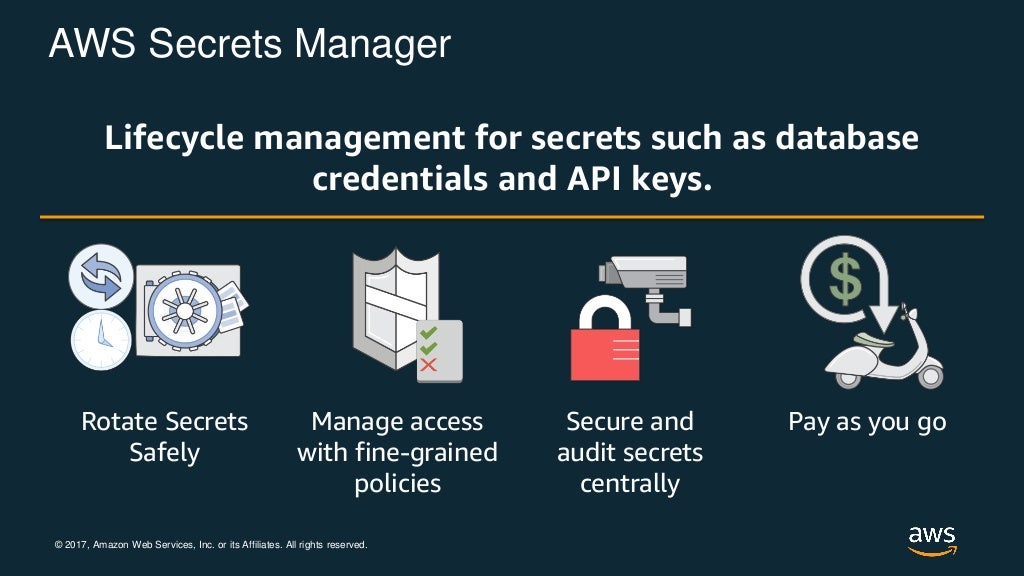


Now, if I needed to access these secrets I’d simply call the API. This services can store, retrieve, rotate. Next, we’ll configure rotation to use the Secrets Manager-provided Lambda function to rotate our password every 10 days.įinally, we’ll review all the details and check out our sample code for storing and retrieving our secret!įinally I can review the secrets in the console. AWS Secret Manager is a services from AWS to store, retrieve and manage secrets throughout its lifecycle. You can use whatever naming scheme you want here. Next, I’ll fill in a quick description and a name to access my secret by. For my RDS Aurora instance it’s straightforward to simply select the instance and provide the initial username and password to connect to the database. First, I’ll click Store a new secret to get to the new secrets wizard. Let’s take a look at how I would store a secret using the AWS Secrets Manager console. My secrets are encrypted with the KMS key of my choice, and each of these administrators can explicitly grant access to these secrets with with granular IAM policies for individual roles or users. My social media manager can put the Twitter API keys in Secrets Manager which I can then access with a simple API call and I can even rotate these programmatically with a custom lambda function calling out to the Twitter API. Secrets Manager has a lot more features, but you may not necessarily need or want them for this use case. There is also an AWS service appropriately named Secrets Manager.
#AWS SECRETS MANAGER UPDATE#
With Secrets Manager my database administrator can provide the credentials in secrets manager once and subsequently rely on a Secrets Manager provided Lambda function to automatically update and rotate those credentials. A more secure solution (but still easy to use) for managing secrets is AWS Parameter Store.
#AWS SECRETS MANAGER MANUAL#
This is a fairly manual process, involving multiple people, that I have to restart every time I want to rotate these credentials.
#AWS SECRETS MANAGER HOW TO#
I would also need to have our social media manager create the Twitter API credentials and figure out how to store those. Previously, I would have had to request a username and password from my database administrator and embed those credentials in environment variables or, in my race to production, even in the application itself. Imagine that I have an application that takes incoming tweets from Twitter and stores them in an Amazon Aurora database. Previously, customers needed to provision and maintain additional infrastructure solely for secrets management which could incur costs and introduce unneeded complexity into systems. As you grow and scale to many distributed microservices, it becomes a daunting task to securely store, distribute, rotate, and consume secrets. Managing application secrets like database credentials, passwords, or API Keys is easy when you’re working locally with one machine and one application. Today we’re launching AWS Secrets Manager which makes it easy to store and retrieve your secrets via API or the AWS Command Line Interface (CLI) and rotate your credentials with built-in or custom AWS Lambda functions.


 0 kommentar(er)
0 kommentar(er)
